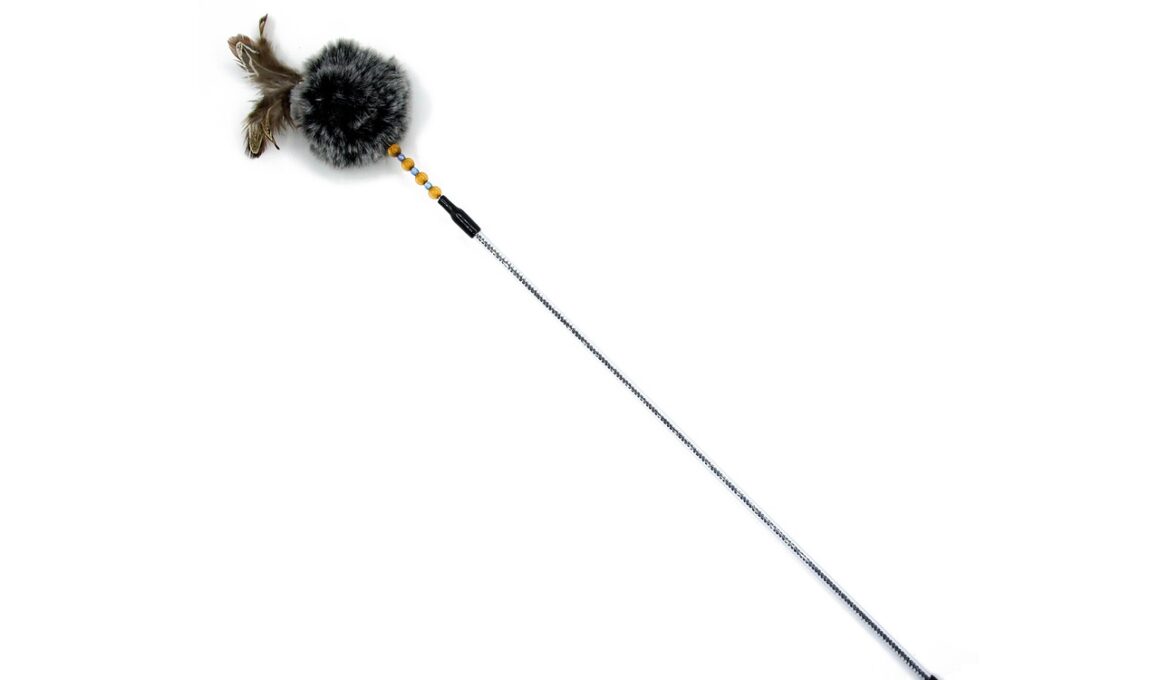The Influence of Material Science on Cat Toy Manufacturing
The manufacture of cat toys is significantly shaped by material science, which plays a crucial role in determining product quality and safety. Various materials, including plastics, textiles, and natural fibers, are commonly employed in crafting toys. The selection of substances influences various factors: durability, flexibility, weight, and safety for cats. For example, non-toxic plastics ensure that toys remain safe during playtime, while durable textiles, such as nylon, withstand rough usage. Moreover, natural fibers like wool offer environmental benefits and appeal to eco-conscious consumers. Manufacturers must prioritize materials that align with safety standards, hence the importance of reliable sourcing practices. Understanding the properties of materials also enhances design possibilities. For instance, integrating soft textures can cater to cats’ natural instincts, encouraging engagement. Using lightweight materials makes toys easier for cats to carry and play with. By strategically selecting appropriate materials, manufacturers create engaging, safe products that cater to diverse feline preferences. Materials that can withstand wear and tear also prolong the lifespan of toys, which appeals to pet owners seeking value for their purchases.
Design also plays a role in how materials are utilized in cat toy manufacturing. Effective design considers the morphology of cats and their natural behaviors while also focusing on material properties. Engineers and designers frequently collaborate to create innovative toys that stimulate feline curiosity and activity. Interactive features, such as feathers or bells, can enhance a cat’s play experience. Furthermore, incorporating varying textures within a single toy can offer sensory exploration, vital for a cat’s mental health. Material elasticity also influences how a toy functions; for instance, using rubber offers bounce, keeping the game exciting for the cat. Additionally, toys fashioned from biodegradable materials are increasingly popular, appealing to consumers interested in sustainability. Responsible sourcing of materials and rapid prototyping enables manufacturers to test designs quickly, refining them based on feedback. This iterative process ensures that new products meet user expectations, leading to better market performance. Therefore, material science primarily informs not just the safety and durability of toys but also influences creative design, which introduces uniqueness in functionalities that captivate cats and their owners, ultimately enhancing satisfaction.
Material Safety and Compliance in Toy Production
Another critical aspect influenced by material science is safety compliance in cat toy manufacturing. Standards set by organizations like the American Society for Testing and Materials (ASTM) require thorough testing for toxicity and mechanical hazards. Manufacturers must ensure that all materials comply with both local and international regulations. Moreover, they must regularly test their products to verify compliance, which involves substantial undertaking and costs. Effective communication of material content to consumers builds trust. For instance, using clear labeling that lists materials used assures pet owners of their safety. In recent years, recalls of unsafe cat toys have highlighted the importance of stringent compliance practices. These incidents shed light on the implications of material choices, urging manufacturers to reassess their sourcing and testing protocols. The continuous advancement of material science provides innovative solutions to bolster safety, enhancing the resilience against potential hazards. This vigilance not only protects pets but also safeguards brand reputation, highlighting the connection between material selection and consumer confidence. As a result, the integration of scientific principles in material selection directly impacts the sustainability of the industry and safety of the final products.
Furthermore, responsible cat toy manufacturers are increasingly exploring eco-friendly materials. The rise in environmental consciousness among consumers drives this shift, leading to the adoption of sustainable practices in sourcing materials. Manufacturers strive to utilize renewable resources, such as organic cotton or recycled plastics, which significantly reduce their carbon footprint. This proactive approach not only benefits the planet but also appeals to consumer demands for eco-friendly products. The robust marketing of these initiatives attracts environmentally aware pet owners looking for sustainable options. Likewise, biodegradable materials offer an innovative pathway for reducing plastic waste associated with traditional toys. Toward a more sustainable manufacturing landscape, companies are investing in the research of plant-based polymers and other natural materials that can decompose efficiently. These developments require a deep understanding of material properties to ensure that toys remain durable while minimizing environmental impact. Moreover, consumer education concerning the benefits of sustainable materials enhances the shift towards eco-friendly options. Ultimately, the interplay between material science and sustainability embodies a growing trend that manufacturers must embrace, positioning them favorably in a competitive market, while promoting global ecological health.
Impact of Technology on Material Selection
Technological innovations have considerably transformed material selection in cat toy manufacturing. Advancements such as 3D printing enable companies to create intricate designs with minimal waste. This technology allows for rapid prototyping, making it easier to test various materials and determine their effectiveness for specific toy designs. Enhanced software tools for simulation provide insights into how materials will behave under different conditions, leading to informed decision-making. This empowered choice facilitates the integration of cutting-edge materials, such as silicone, known for its safety and versatility. Also, smart toys equipped with sensors and interactive features are becoming more prevalent, requiring materials that can accommodate electronic components without compromising safety. Therefore, the intersection of technology and material science not only optimizes production processes but also encourages innovative designs that engage felines. This dynamic approach fosters an environment where manufacturers can remain agile in a competitive landscape while continually addressing consumer demands. Ongoing research into advanced materials, such as those with antimicrobial properties, also reflects modern trends aimed at enhancing the safety and durability of toys, further exemplifying how technology influences material selection, and ultimately, product quality.
Moreover, consumer trends play a significant role in influencing material science within the cat toy industry. The shift towards wellbeing and enrichment reflects a growing awareness of animal needs and behaviors. As pet owners increasingly emphasize the importance of mental and physical stimulation, toy manufacturers are adapting their material choices accordingly. The popularity of interactive toys that incorporate natural materials appeals to cat owners concerned about wellness and sustainability. Furthermore, the development of sophisticated toys that incorporate varied materials is greatly impacted by consumer feedback and preferences. Understanding consumer insights drives manufacturers’ innovations, leading to the exploration of unique materials that capture the interest of cats. In particular, the trend towards cat enrichment shapes the demand for materials that facilitate interactive play, thus pushing manufacturers to rethink traditional approaches. Additionally, branding and marketing strategies focus on the material qualities of the toys, highlighting safety and durability. Supporting this narrative is critical in today’s market landscape, where pet parents prioritize quality alongside pricing. Ultimately, staying ahead of consumer preferences encourages manufacturers to embrace a material-centric approach, creating products that resonate with the market and ensure loyal customer bases.
Future Directions in Cat Toy Manufacturing
As the cat toy industry evolves, the influence of material science is expected to grow even more significant. Ongoing research in polymer technology and the development of novel composite materials open up exciting possibilities for creating advanced cat toys. The future may see the rise of smart toys embedded with sensors that respond to a cat’s behavior, providing personalized experiences that cater to individual play styles. Likewise, the integration of artificial intelligence can facilitate adaptive toys that change their functionalities based on the play patterns observed. Breathable, lighter materials that offer enhanced durability could redefine how toys are designed. Furthermore, as environmental concerns persist, manufacturers will likely prioritize sustainability, investing in innovations that minimize waste and improve recyclability. Emphasizing education and transparency about material usage and sourcing in marketing will become essential to building trust with consumers. The collaboration between manufacturers, designers, and scientists will also be pivotal in refining production processes and enhancing overall efficiency in the industry. Ultimately, the integration of material science with technology and consumer considerations will pave the way for a new era in cat toy manufacturing that maximizes engagement, safety, and sustainability.
By the continued exploration of material science, we can envision a future filled with innovative cat toys that cater to our feline friends’ physical and mental wellbeing. Engaging products that stimulate; physical health and cognitive abilities are paramount in promoting enriched lifestyles for our pets. Pet owners recognize that quality toys enhance their cats’ lives, creating an essential bond through interactive playtime. Emerging materials that offer unique properties for enhanced safety and sustainability will reshape consumer expectations and industry standards. Moreover, incorporating transparency in development processes regarding the materials used will further enhance brand trust and loyalty. Social media and online platforms are vital for sharing information about innovative designs and the advantages of specific materials used in manufacturing. The increase in education surrounding the health benefits associated with engaging toys is likely to empower consumers to make informed choices. This journey is marked by the communal goal shared by manufacturers, pet owners, and scientists to enhance feline welfare through quality play. Therefore, the alignment of material science, consumer expectations, and technological advancements points toward a bright future for cat toy manufacturing built on innovation and responsibility.


